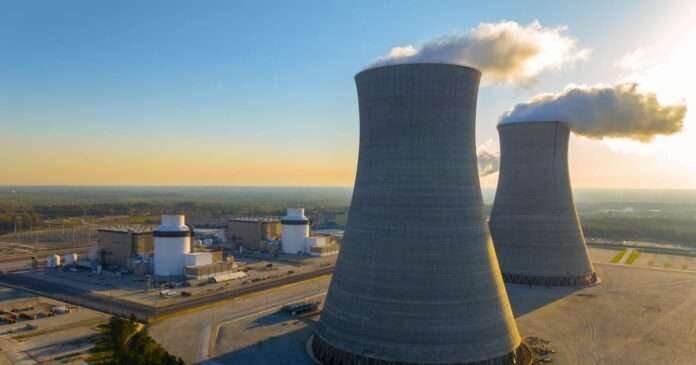The Nuclear Company, a venture capital–funded project-development firm, came out of stealth last week and announced eye-raising plans: It aims to deploy a 6-gigawatt nuclear-fission reactor fleet by the mid-2030s.
That 6 gigawatts would represent more nuclear-generating capacity than the U.S. has deployed in the last decade. The U.S. has commissioned only three new reactors since 2016 and currently has zero commercial reactors under construction, but nevertheless, it pledged to triple its nuclear capacity by 2050 along with more than 20 other countries at last year’s COP28.
In order to meet that long-shot goal, the U.S nuclear industry will have to radically change the way it operates. The new startup has a plan to try to achieve that. Instead of the first-of-a-kind construction process that has paralyzed the nuclear supply chain and workforce for the last 30 years, The Nuclear Company’s fleet-deployment model counts on using proven, licensed technology to construct a series of reactors across the U.S.
“Our target is to start putting clean neutrons on the grid by the mid-2030s” using a “design-once, build-many approach,” Juliann Edwards, chief development officer of The Nuclear Company, told Canary Media. “You can’t do a one-off project. You have to do things at fleet scale.”
Jonathan Webb, founder of bankrupt indoor-farming startup AppHarvest, is the cofounder and CEO of The Nuclear Company. Patrick Maloney, of investment firm CIV, is cofounder and chairman. The Nuclear Company employs fewer than 50 people and has received an undisclosed funding round from investors including CIV, True Ventures, Wonder Ventures, Goldcrest Capital, and MCJ Collective. Edwards told Canary Media that an additional capital raise is in progress.
Despite the rising demand for nuclear’s always-on, carbon-free power, new development has been hamstrung by the fact that recent U.S. nuclear projects have almost all been over budget and behind schedule. For example, Georgia Power’s Vogtle Unit 3 — the first new American reactor in decades — finally came online last July, while Vogtle Unit 4 was connected to the grid earlier this year. The pair of Vogtle reactors came in years later than scheduled and at more than double the original cost estimate, although the second unit was less expensive and its build proceeded faster than its predecessor’s.
The Nuclear Company is trying to harness the potential power of the learning curve and the magic of economies-of-scale to overcome these hurdles. It’s not a new concept for the industry — the Department of Energy’s report “Pathways to Advanced Nuclear Commercial Liftoff” claims that a committed order book of reactors is critical to accelerating technology learning and making nuclear cost-competitive with fossil gas and renewables — but it’s a theory that has not yet been put into practice in the country.
Can America regain its nuclear energy dominance?
The U.S. has the world’s largest nuclear power fleet and generates more electricity from fission energy than any other nation — for the time being. It’s clear that China is on track to take the lead in the coming decade, with 27 nuclear plants currently being built and another 70 in the planning stages. It aims to build a total of 150 new reactors by 2035 and currently has 55.
In the mid-2000s, the U.S. entered a drilling and fracking boom that increased the domestic supply of cheap natural gas. Over the same period, the costs of wind and solar power plunged, and more recently, lithium-battery-based energy storage has fallen. These inexpensive energy sources, along with pushback from nuclear opponents, resulted in U.S. nuclear companies losing deals to supply power in competitive markets.
But a new driver for building American nuclear power has emerged: the expected surge in baseload energy demand catalyzed by the rise of AI, a revitalization of domestic manufacturing, and the electrification of everything. U.S. electricity load growth is now expected to grow by 4.7 percent over the next five years, double the forecast from 2022, according to grid planners.
The Nuclear Company believes the best way to meet that demand is not just nuclear reactors in general, but specifically using proven “giga-scale reactors,” Edwards said. That’s a stark contrast to the small modular reactors (SMR) much of the industry is focused on at the moment.
Source link
#nuclear #industry #stuck #startup #rolling




![Hyundai’s electric hot hatch spotted out in the wild for the first time [Images] Hyundai’s electric hot hatch spotted out in the wild for the first time [Images]](https://ev-magazine.com/wp-content/uploads/2025/12/1766723605_Hyundais-electric-hot-hatch-spotted-out-in-the-wild-for-324x160.jpeg)